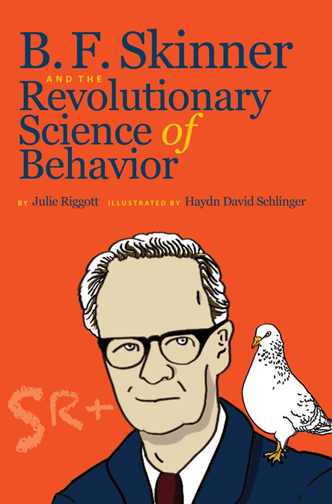
By Matthew ARAT
Teaching kids when to eat, when to sleep or how to play an instrument is all part of behavioral science. Studying how humans act can be a fascinating and varied subject for both parents and kids.
Recent works published by Glendale residents Julie Riggott (with illustrations by her son 12-year-old Haydn David Schlinger) and Hank Schlinger cover different sides of behavioral science with their books dedicated to the subject and the pioneer who developed it, B.F. Skinner.
“I fell in love with children’s books when I was reading to Haydn,” said Julie Riggott, author of “B. F. Skinner and the Revolutionary Science of Behavior.” “I was impressed by behavioral science and B. F. Skinner, an incredible person [who was an inventor] and was very positive about science. Then I found out there were no books on Skinner.”
Riggott spent time in Cambridge with Skinner’s daughter, going over his notes, paintings and inventions to get a better sense of who he was.
“He had a creative childhood,” Riggott said. “Being a scientist allowed him to make big discoveries. He wanted to use science to make the world a better place.”
Riggott’s book is more biographical and is intended for middle school students. To aid them, her son Haydn produced illustrations of Skinner and his inventions that are peppered throughout the book. Haydn said he hopes that his artwork will help students understand Skinner and increase interest in his work.
“It might inspire them to go into the arts and sciences,” he said.
While he was a kindergarten student in the Glendale public schools, Haydn won a national Scholastic Books drawing contest and earned a set of books and CDs for the school library. He was also a winner of the Vroman’s Bookstore bookmark contest as a third grader, and his bookmark was placed in a time capsule in the wall of the store’s new wine bar.
Henry D. (Hank) Schlinger, husband to Julie and father to Haydn, wanted his book, “How to Build Good Behavior and Self-Esteem in Children,” to appeal to educators looking to improve their studies and work in behavioral science.
“I published articles and books on child development. The book is meant to be training for teachers and staff members,” he said.
Schlinger is a professor of psychology at California State University Los Angeles and scholar who is invited to speak around the world. He wrote his book as a manual for creating lasting positive change in behavior.
The effort to bring Skinner’s work to light has been difficult for Riggott and Schlinger.
“[Julie’s] goal was to help kids with behavioral science (like getting kids to sleep). Mine was a general problem book, to get all the solutions into one book,” said Schlinger. “I think behavioral science isn’t as foreign as biology or chemistry. It’s difficult for behavioral scientists to persuade people.”
Riggott hopes that kids will be inspired enough by Skinner to become creative and take on the study of how one acts.
“I added a chapter about the science of behavior and where reluctance comes from,” she said. “If people believe in free will, they don’t believe in behavioral science. I asked a group of kids what they thought when they read it, and they loved it! They said it was their favorite chapter.”
Both books are currently available online.
